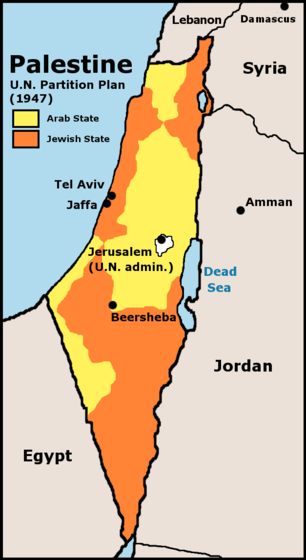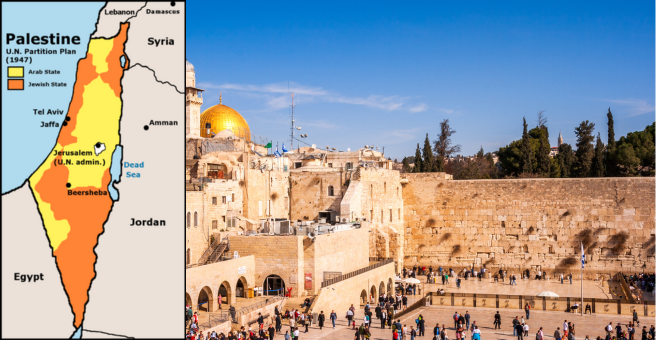Was Palestine A Country Before Israel
Before the establishment of the State of Israel in 1948, the region known as Palestine was part of the Ottoman Empire. Following World War I, the League of Nations granted Britain the mandate to govern the territory, encompassing present-day Israel and the Palestinian territories.
During the mandate period, the term “Palestine” referred to the geographic area, but it did not represent an independent, sovereign nation. The population included Arab Muslims, Christians, and Jews, and tensions among these groups heightened over time.
In 1947, the United Nations proposed a partition plan to create separate Jewish and Arab states in Palestine, with an internationalized Jerusalem. While the Jewish leadership accepted the plan, the Arab leadership rejected it, setting the stage for the Arab-Israeli conflict.

Map showing the 1947 UN partition plan for Palestine. -Wikipedia
In 1948, Israel declared independence, leading to the Arab-Israeli War as neighboring Arab states intervened. The outcome of the war resulted in Israel gaining control of territories beyond the UN partition plan. Simultaneously, the West Bank came under Jordanian control, and the Gaza Strip came under Egyptian control.
The displacement of Palestinian Arabs during the 1948 Arab-Israeli War, commonly known as the Nakba or “catastrophe,” was a result of the conflict that ensued when surrounding Arab nations initiated a war after Israel declared independence. The Arab-Israeli War began in May 1948, shortly after Israel’s declaration of independence.
The surrounding Arab states, including Egypt, Jordan, Syria, Lebanon, and Iraq, opposed the UN partition plan that aimed to create separate Jewish and Arab states in Palestine. When Israel declared independence, neighboring Arab states intervened militarily, contributing to a series of battles that marked the war.
As a consequence of the conflict, many Palestinian Arabs fled or were expelled from their homes. The reasons for displacement were multifaceted and included military actions, forced expulsions, fear of violence, and in some cases, voluntary departures. The displacement of Palestinian Arabs and the creation of a significant refugee population are integral aspects of the historical narrative of the Arab-Israeli conflict.
When Did Palestine Exist
The concept of a distinct political entity known as Palestine has deep historical roots. Historically, the region known as Palestine has been home to various peoples and civilizations for thousands of years. The term “Palestine” itself has ancient origins and is associated with the Philistines, an ancient people who inhabited the coastal areas of the region.
In the modern context, the idea of a Palestinian state or political entity gained prominence during the 20th century. After World War I, the League of Nations granted Britain the mandate to govern the territory, which included what is now Israel, the West Bank, and the Gaza Strip. During this period (1920-1948), the term “Palestine” was used to describe the geographic area under British administration.
When Was Palestine Created
Historically, parts of what is now Jordan were included in the geographical region known as Palestine during the British Mandate. The League of Nations granted Britain the mandate to govern and administer the territory, which encompassed not only what is present-day Israel but also the West Bank and parts of present-day Jordan. The borders of the mandate extended to the entire area west of the Jordan River.
However, during the course of the Arab-Israeli War in 1948, Jordan took control of the West Bank, including East Jerusalem, and annexed these territories in 1950. This annexation was not internationally recognized by most countries. The Gaza Strip, on the other hand, came under the control of Egypt during the same conflict.
As a result, while the original British Mandate for Palestine included both sides of the Jordan River, the geopolitical changes following the war led to the establishment of distinct entities, with Jordan controlling the West Bank and Israel emerging as an independent state. The situation has since evolved, and the borders and political entities in the region have been shaped by subsequent conflicts and diplomatic processes.


